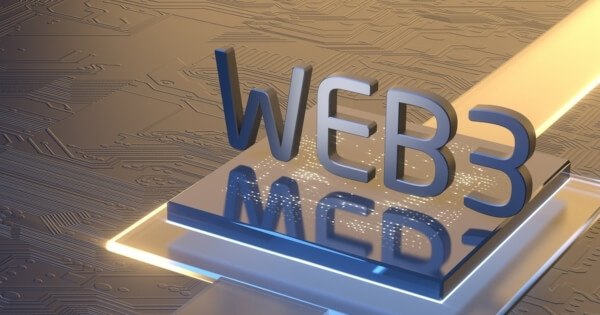Welcome to the world of Web3, where the internet is no longer just a tool for communication and entertainment but a platform for decentralized applications that can change the way we live, work, and learn. As we move towards a more decentralized future, it’s essential to understand the building blocks of Web3 and its potential to revolutionize education. In this article, we will explore the concept of Web3 and its impact on education. We will also discuss the challenges that come with this new technology and how educators can prepare themselves for the future of learning. So sit back, relax, and let’s dive into the fascinating world of Web3 education!
Web3: The Future of the Internet
As we move into the future, it’s becoming increasingly clear that the internet is going to play an even more significant role in our lives than it already does. And with the rise of blockchain technology, we’re seeing the emergence of a new version of the internet: Web3.
Web3 represents a shift away from centralized systems towards decentralized ones. In other words, instead of relying on a few powerful entities to control and manage our online experiences, Web3 allows us to take control ourselves. This means greater privacy, security, and autonomy for users.
But Web3 isn’t just about decentralization. It’s also about creating new ways for people to interact with each other and with digital assets. With smart contracts and decentralized apps (dApps), we can create entirely new ecosystems that are more transparent, efficient, and fair than anything we’ve seen before.
In short, Web3 represents a fundamental shift in how we think about the internet. It’s not just another iteration of what came before; it’s something entirely new and exciting. And as we’ll see in the next section, there are plenty of reasons to be excited about its potential.
The Building Blocks of Web3
Web3 is a decentralized web that operates on blockchain technology. The building blocks of Web3 include smart contracts, decentralized applications (dApps), and digital currencies. Smart contracts are self-executing agreements that run on the blockchain and eliminate the need for intermediaries in transactions. dApps are applications that operate on a peer-to-peer network rather than a centralized server, providing greater security and transparency.
Digital currencies, such as Bitcoin and Ethereum, are an essential component of Web3. They allow for secure and transparent transactions without the need for traditional financial institutions. These building blocks work together to create a decentralized ecosystem that is more secure, transparent, and efficient than traditional web technologies.
As Web3 continues to evolve, new building blocks will emerge, including decentralized identity systems and data storage solutions. These innovations will further enhance the capabilities of Web3 and enable new use cases for decentralized applications. Understanding these building blocks is crucial for anyone looking to participate in the Web3 ecosystem or build their own dApp.
The Potential of Web3
Web3 has the potential to revolutionize the way we interact with the internet. With its decentralized nature, Web3 can provide a more secure and transparent online experience for users. This means that individuals can have greater control over their personal data and privacy, without relying on centralized authorities.
Moreover, Web3 enables the creation of decentralized applications (dApps) that can operate without intermediaries. This opens up new possibilities for peer-to-peer transactions, social networks, and other services that are currently dominated by centralized platforms. With Web3, users can participate in these services without having to trust a single entity with their data.
Overall, the potential of Web3 is vast and exciting. It promises to create a more democratic and equitable internet that empowers individuals rather than corporations or governments. However, realizing this potential will require overcoming significant technical and social challenges, which we will explore in the next section.
The Challenges of Web3
As with any new technology, there are bound to be challenges that arise when implementing it. Web3 is no exception. One of the biggest challenges facing Web3 is the issue of scalability. Currently, the Ethereum network can only handle a limited number of transactions per second, which can lead to slow transaction times and high fees. This makes it difficult for developers to build decentralized applications that can handle large amounts of traffic.
Another challenge facing Web3 is the issue of user adoption. While many people are excited about the potential of Web3, it can be difficult for newcomers to understand how it works and how to use it effectively. This lack of understanding can lead to frustration and a reluctance to adopt the technology.
Finally, there is also the issue of regulation. As Web3 becomes more mainstream, governments around the world will likely begin to regulate it more heavily. This could lead to restrictions on certain types of decentralized applications or even outright bans in some countries.
Despite these challenges, there is no doubt that Web3 has enormous potential to revolutionize the way we interact with each other online. By addressing these challenges head-on, we can ensure that this technology reaches its full potential and benefits everyone who uses it.
The Future of Web3 Education
As we move towards a more decentralized and democratized internet, the need for education on Web3 technologies becomes increasingly important. The potential of Web3 to revolutionize industries such as finance, healthcare, and supply chain management is immense, but without a strong foundation of knowledge and understanding, these advancements may not be fully realized.
The future of Web3 education lies in creating accessible and inclusive learning environments that cater to individuals from all backgrounds. This includes providing resources for both technical and non-technical learners, as well as offering opportunities for hands-on experience through workshops and hackathons. Additionally, collaboration between industry professionals and educators will be crucial in ensuring that the curriculum remains relevant and up-to-date with the latest developments in the field.
By investing in Web3 education today, we can pave the way for a more equitable and innovative future tomorrow.
Conclusion
In conclusion, the emergence of Web3 technology has opened up a world of possibilities for the internet and education. With its decentralized nature and advanced features, Web3 has the potential to transform the way we learn and interact online. However, there are also challenges that must be addressed, such as security concerns and accessibility issues. Despite these obstacles, it is clear that Web3 education platforms will play an increasingly important role in shaping the future of education. As we continue to explore this exciting new frontier, it is crucial that we work together to ensure that everyone has access to the benefits of Web3 technology.



